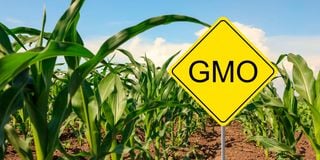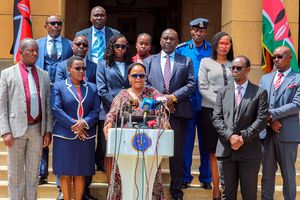Premium
Maize and trade: Free lesson for Kenya from México

Genetically modified maize.
What you need to know:
- Kenya beware. A similar story is being cooked. In a March report, US trade officials detailed their gripes on the “most important foreign barriers affecting US exports.” Kenya makes the list. The complaints are specific.
- They echo what was said about México. The report is critical about limits on aflatoxin for maize, as Kenyan controls are lower than what US regulators find safe. These measures are presented as inconsistent with international food standards. Not mentioned is that these standards are not binding.
Ngũgĩ wa Thiong’o wrote: “Stories, like food, lose their flavour if cooked in a hurry,”. This is the case for maize. Our story cites the trade agreement with the US and expected impacts on ugali and githeri.
Next week in Mombasa, Kenyan and American diplomats start a sixth round of negotiations for the Strategic Trade and Investment Partnership (STIP) covering agriculture. Both sides are eager for a final text. Negotiations began in 2022. Imports from Kenya have increased 10 per cent annually for two decades. An economic partner in East Africa looks good for American geopolitics. But trade is more than predictions and images.
Look at México, it agreed to US trade pacts twice. México’s experiences serve up valuable lessons on maize and trade for Kenya. Many Mexicans say tortillas, flatbread made from maize and rolled and stuffed to make tacos, have lost their flavour with free trade. This perspective comes from three decades of warnings on the grain, called maíz in México and corn in the US.
The economic story begins with the North American Free Trade Agreement (NAFTA) in 1994. México eliminated tariffs on maize imports because low-priced high-volume US maize supplies were promised. Leaders assumed lower prices would alleviate rural challenges and urban food insecurity.
This opposite happened, slowly and quickly. Displaced by maize and other agricultural imports, 4.9 million Mexican family farmers were displaced; a net loss of 1.9 million jobs by 2007. Trade predictions didn’t work out.
Next, a fast crisis brewed in 2006-2007. Maize prices skyrocketed due to increased global demand for ethanol, a maize-based energy source. International energy markets desperately sought alternatives to oil. Good for US farmers. Bad for Mexican buyers.
NAFTA created extreme vulnerabilities, since México depended on maize imports. During the country’s “tortilla crisis” consumers were forced to pay for spiking prices for daily staples. These aren’t good images for leaders.
In 2020, the story is about loss of control with the US-Mexico-Canada Agreement, NAFTA 2.0. The agreement promised to not force genetically modified crops (GMOs). Its chapter on agriculture expressly states that it does “not” mandate any “authorisation” for agricultural biotechnology products. The food safety chapter adds that countries may adopt measures they determine appropriate for “protection of human . . . life or health.”
Things changed. The two neighbours are in epic legal battle over GMO maize, with trade tribunal proceedings in June and findings expected in November.
In a Decree from February 2023, México banned GMO maize for human consumption, specifically limited to tortillas and masa (dough) out of concern for human health, biodiversity, and food security. The Decree says GMO maize remains legal for animal feed. Most American maize is GMO and for animal feed. México still imports this and other GMOs like cotton and canola. In fact, maize imports from the US have risen to record levels.
But, the US sticks to its guns in its legal filings, claiming the Decree violates trade obligations. It ignored Mexican claims that GMOs pose a cancer risk because these farms need glyphosate, a herbicide that’s likely carcinogenic.
Kenya beware. A similar story is being cooked. In a March report, US trade officials detailed their gripes on the “most important foreign barriers affecting US exports.” Kenya makes the list. The complaints are specific.
They echo what was said about México. The report is critical about limits on aflatoxin for maize, as Kenyan controls are lower than what US regulators find safe. These measures are presented as inconsistent with international food standards. Not mentioned is that these standards are not binding.
But they are preferred by the US. Grievances go so far as to say Kenyan import procedures make US maize exports uncompetitive. Translation: follow our regulations on food safety, comply with non-binding rules, and tailor procedures so we profit.
Kenya must ask questions, during the negotiation rounds. Slow down the trade story. Seek answers on what measures Kenya preserves in any STIP text. This is far easier now than defending legal positions before a tribunal, years later. The Mexican experience suggests Kenya seek clarity on aflatoxin, moisture content, and required market access for biotech products. Nip the fast stories on low-price-high supply maize. US needs are different.
Kenyans should be concerned before any treaty obligation. Otherwise, the legal fight will be over ugali and githeri, just as México now battles for tortillas and masa.
Ernesto Hernández-López, is a Professor of Law at the Dale E. Fowler School of Law, Chapman University, in California. He writes on international trade and agriculture. @ProfeErnesto1




